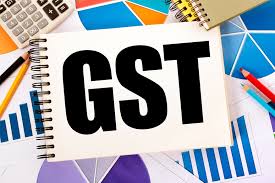GST rates: We are caught in a cleft stick
Lalayet pancha varshani, dasha varshani tadayet.” This is a Sanskrit aphorism, sometimes ascribed to Kautilya/Chanakya. I have quoted the first half of the aphorism. “Nurture a child for the first five years and strike him with a rod for the next ten years.” GST was born on 1 July 2017, though a long period of time elapsed between original conception and final delivery. After this July 1, GST will cease to be an under-5 child. As a society, it is necessary to take stock and chastise if necessary. As a subset of society and as the relevant decision-making body, it is up to the GST Council to restructure and reform. Compensation to states approaches its expiry date. But that’s incidental. It may be of consequence, but is consequential. More important is the question of what we want GST to be. There can be no dispute about an ideal GST. All goods and services should be part of the GST net and there should be a single rate. All means all—alcohol (for human consumption), petroleum and products, electricity, land and many services now exempted. The word “exempted” should not be misunderstood. There are items that are part of the GST framework, but are “exempted” in the sense of being subject to a zero or nil rate. I am not using the word exempted in that sense.
My usage of “no exemptions” means everything should be part of GST. That’s the ideal. That’s where real efficiency gains come in. There can be no dispute about the ideal. Whether we aspire for the best, or for a second-best, is a secondary question. No country has achieved that ideal and we may not even want to get there. Even if we do, it will take several years. GST has to be work in progress (WIP). However, when economists use the expression “efficiency gains” and seek to estimate it, they have in mind that ideal. It’s important to remember this. When GST was introduced, numbers floated around to the effect that GST would lead to incremental GDP growth of between 1.5% and 2%. When quoting, it is best to read the original source for such figures. This was a NCAER study done for the 13th Finance Commission (FC). The 13th FC Report said, “A National Council of Applied Economic Research (NCAER) study sponsored by the Commission explains why implementation of such a Model GST will be a positive sum game and will bring considerable economic benefits for the whole country, with reduced transaction costs, revenue neutrality and substantially lower tax rates. … It estimates that implementation of a comprehensive GST across goods and services will enhance the nation’s Gross Domestic Product (GDP) by between 0.9 and 1.7 per cent.” Note the use of expressions like “Model” and “comprehensive”. That’s the ideal.
Even a WIP GST will reduce transaction costs and simplify. But 1% and 2% are for the ideal, not otherwise. You can rightly complain. I said—one should read the original source. But I have only quoted from a report that quoted the original. The original NCAER study is readily available. To quote from that, “The additional gain in GDP, originating from the GST reform, would be earned during all years in future over and above the growth in GDP which would have been achieved otherwise … The GST must be applied on all sectors both tradable and non-tradable.” Let me ignore the question of non-inclusion of items, except to point out that revenue neutrality and lower tax rates cannot be achieved without complete inclusion. Having said this, how many rates are there now? 0%, 0.1%, 0.25%, 3%, 5%, 12%, 18% and 28%. In addition, there is a GST compensation cess, hopefully temporary. That’s not really a simplified structure, is it? There can be no quarrel with the proposition that the ideal is a single rate. This reduces compliance costs and curbs classification disputes and litigation.
The counter-argument is obvious. Surely, products consumed by the poor must be taxed at lower rates than items consumed by the relatively rich. I personally think this is a cobweb. Equity should be achieved through instruments other than tax policy. Within tax policy, progressivity should be introduced through direct taxes, not indirect. But spiders have spun such thick cobwebs that this proposition will never be accepted, not in India, not elsewhere. There is also the argument about “inversion” in duties and a high rate cross-subsidising a lower rate. Hence, the 15th FC recommended three rates—merit, standard and demerit (sin). Consequently, we will quibble about which item belongs in which category. The GST Council has set up a GOM (Group of Ministers) in September 2021, to recommend simplification. For a start, the revenue neutral rate should have been at least 16%, if not more. The present average is 11.6%. That’s because of a bunch of items at the lower end, triggered by perverse incentives revenue compensation created. Therefore, this boils down to deciding what those three rates are. What will 12%, 18% and 28% be merged at? That depends on what 0%, 0.1%, 0.25%, 3% and 5% are merged at. The standard should be the revenue neutral rate of 16%, or thereabouts. If the merit does not become at least 8% (not easy to accept), the demerit cannot be lower than 24%. In all probability, it will be more. Otherwise, there will be revenue losses. Let’s see what the GOM recommends. We are caught in a cleft stick.\
Source:https://www.newindianexpress.com/opinions/2022/mar/19/gst-rates-we-are-caught-in-a-cleft-stick-2431682.html
Download our App to get knowledge updates: https://play.google.com/store/apps/details?id=com.app.gstmitr
Join Our Telegram Channel for more updates:https://t.me/praveengst




Comments
Post a Comment